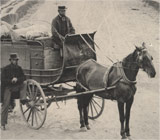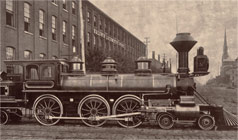Local Enterprise: The Pre-Industrial Era

In the American agrarian economy of the early nineteenth century the material means of the majority of the population were relatively simple. Businesses in most areas of the country operated as local, independent, and often family-owned enterprises that included farms, stores, artisan shops, small manufacturing firms, various regional industries (such as textiles), and international import and export firms. Small-scale enterprises still made up a critical part of the United States economy, but the emergence of the railroads in the mid-nineteenth century ignited the rise of modern big businesses. “The railroad, with its vast possibilities for the advancement of the commercial, industrial and social interests of the world,” wrote noted economist and statistician Joseph Nimmo in 1885, “ran directly counter to the pre-existing order of things.”2 By the turn of the century, the impact of the railroads was widely evident in the emergence of larger companies, with labor forces of as many as 100,000 employees, that were generating and distributing mass-produced goods.
Captains of industry who started out in small, local enterprises included individuals like Matthias W. Baldwin. Baldwin began his career as a silversmith’s apprentice in Philadelphia in 1817 and opened his own shop a few years later. He began to manufacture bookbinders’ tools and printing cylinders, which required the energy of a stationary steam-powered engine. With the introduction of the railroads, Baldwin began to specialize in a new niche, the production of steam-powered locomotive engines. By the late 1800s, his company had emerged as the leading manufacturer of locomotives in the world. Nearly 4,500 employees working day and night shifts produced approximately one thousand locomotives a year by 1890. The trajectory of Baldwin’s career reflects the marked changes to come in American business in the second half of the nineteenth century. His plant, which the company literature noted had “grown with the [railroads] growth and kept pace with their progress,” would be emblematic of the new era of modern capitalism.3






![Baldwin Locomotive Works. Bird's Eye View. Baldwin Locomotive Works: Illustrated Catalogue of Locomotives. Philadelphia: Lippincott, [1871?]. Trade Catalog Collection, Baker Library Historical Collections.](images/site/pictures/menu2/6_thumb.jpg)